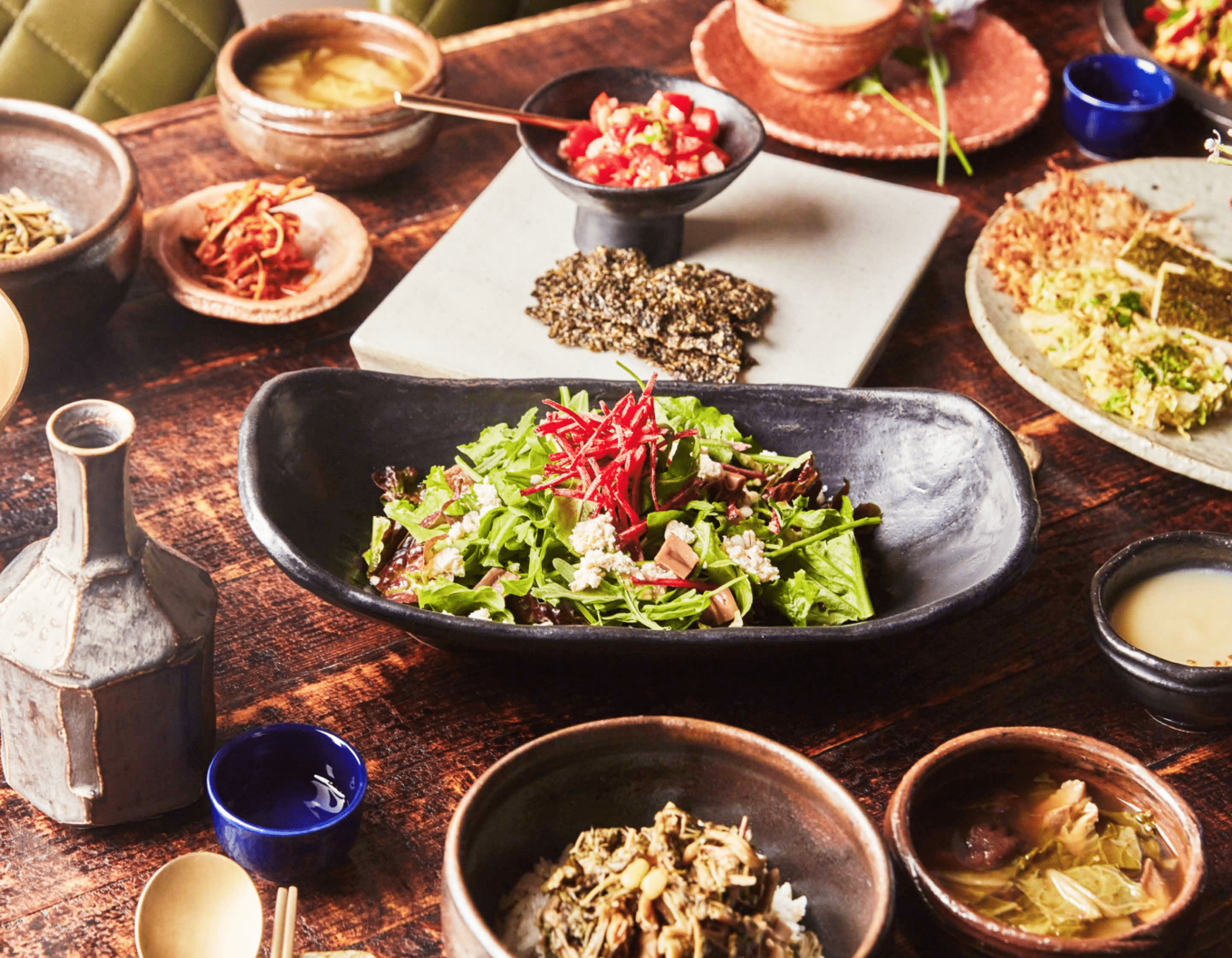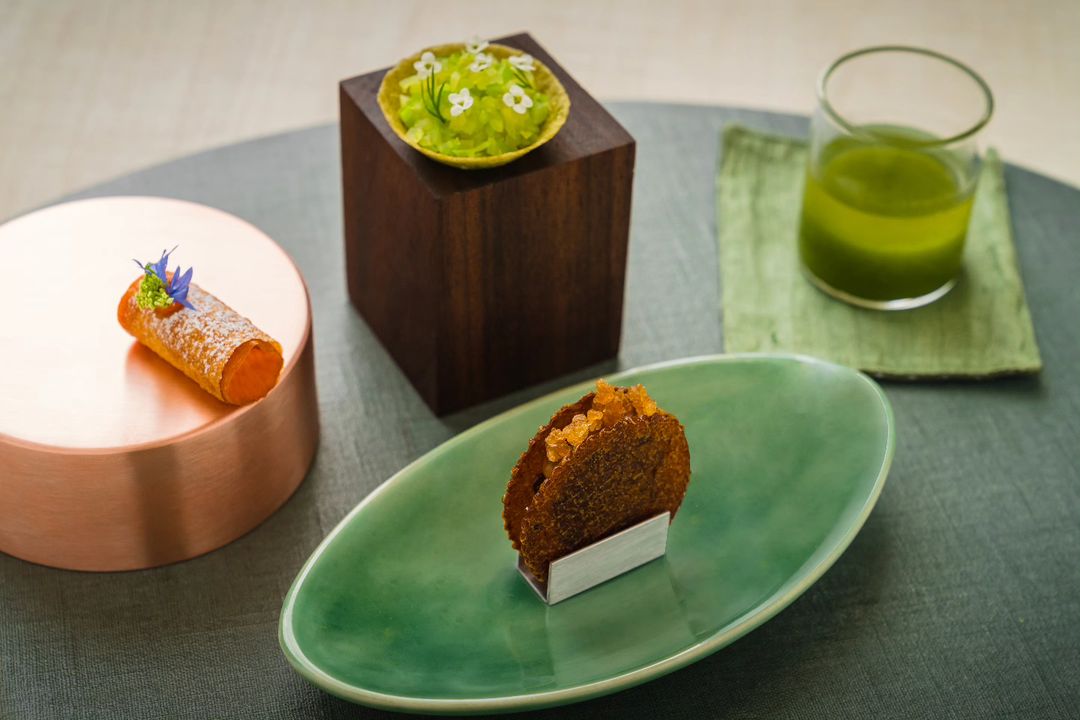From Street Food to Restaurants: Why South Korea May be the Next ...
When you’re choosing a vacation destination, there are probably a few things you’re aiming to check off your list. And it might go something like this: stunning scenery, vibrant nightlife, rich culture, and fascinating history. But without a doubt, for most vegan travelers, delicious food is one of the most important vacation must-haves. And South Korea has it in spades—as well as the scenery, nightlife, culture, history, and … well, you get the picture, it has it all.

When you think of Korean food, kimchi is probably one of the first things to come to mind. The spicy, pickled cabbage is popular all over the world and has become a symbol of the Asian country’s cuisine. Kimchi is often vegan (when made without fish paste), which, despite the high rates of meat consumption in the country, is actually far from unusual for a traditional South Korean dish. Meat consumption didn’t start to surge until after the Korean War, which means that most of the country’s dishes have vegetarian roots. And in many Buddhist temples, you’ll find that plant-based cuisine is still the norm among monks and nuns (more on that later).
But South Korea’s modern vegan scene is surging—particularly in the capital of Seoul. In fact, Happy Cow actually has more than 600 listings of vegan-friendly restaurants in this one city alone thanks to the demand by the country’s young people. According to a survey conducted in 2022, South Koreans aged 18 to 29 are the group most likely to purchase vegan food products. And the Korean Vegetarian Union says about half a million South Koreans identify as vegan, while 1.5 million are vegetarian or flexitarian.

To get an idea of just how much plant-based cuisine is evolving, we spoke to several vegan travel experts (all of whom have spent time in South Korea) to get their recommendations for meat-free restaurants in Seoul, as well as their tips for finding the tastiest Korean street food. A warning for you and your bank balance: you’re going to want to book a flight immediately.
Maji, one of many vegan-friendly eateries in Seoul, serves temple food. | Korea Tourism Organization
Types of Korean foodKorean barbecue is a staple of the restaurant scene in most major US cities. In fact, some reports suggest there are more than 7,000 Korean barbecue restaurants across the country. But while barbecue is one of the country’s most-loved exports, there is far more to South Korea than grilled meat.
When visiting, you’re bound to come across rice-based dishes such as the spicy, flavor-packed bibimbap. At its core, the dish is plant-based, although eggs and meat are often added (simply ask for it without). Like many popular dishes, bibimbap is made with assorted vegetables, including mung bean sprouts, spinach, and Korean radish, as well as namul (which refers to edible grasses or leafy greens) and a savory, sweet paste with a kick called gochujang.

There are also noodle dishes, like japchae, which features sweet potato glass noodles and can be veganized easily (just ask for no meat), mul naengmyeon (which is a seasonal noodle dish that’s vegan when made with radish water and no beef), and jjajangmyeon. The latter features a thick black bean sauce, vegetables, and pork, but you can also find vegan versions in several eateries (hint: check out our restaurant recommendations below).
“Jajangmyeon might not be the most attractive-looking food you will eat while you are in South Korea, but it is so yummy (and not spicy if you need a break from spice),” Verena Erhart of Vegan Tours New York says. “It also happens to be Korea’s most popular delivery dish, like pizza in the US. You might have even spotted it in K-dramas.”
Erhart also recommends ordering plenty of banchan, which are the small, often vegetable-centered side dishes offered in South Korean restaurants.
But if you’re a vegan visitor, one of the first places you should be heading for top-notch plant-based cuisine is a temple. “Don’t leave South Korea without trying temple food,” Erhart says. “It’s a vegan’s best friend.”In these peaceful places of Buddhist worship, meat-free is the norm. You’ll find kimchi, of course, alongside straightforward, low-waste meals like tofu stew and rice soup. The food is allium-free (so you won’t find ingredients like onions and garlic), strikingly minimalist, healthy, sustainable, and vegan (except for the occasional use of honey).

Donna Zeigfinger of Green Earth Travel, who visited Jingwansa, a 12th-century Buddhist temple in Seoul’s Bukhansan National Park, agrees that temple food is next level when it comes to flavor and experience. “I loved the temple atmosphere,” she says. “I really thought that it would be bland food and boy, was I wrong.”
Seoul’s vegan and vegetarian restaurant scene is consistently growing. | Korea Tourism Organization
Korean street food is vegan-friendlyWhen it comes to Korean cuisine, you also can’t ignore the diverse range of street food that is always on offer for natives and tourists alike.
A significant piece of South Korea’s cultural DNA since the 1300s, food stalls are part and parcel of local life. In fact, the leading travel platform Culture Trip has even described Seoul as “one big open-air restaurant.” And in more great news for vegan visitors, while the scene is undeniably meat-heavy, you’ll still find it easy to come by plant-based options while you’re strolling the streets for a quick and tasty bite—if you know what you’re looking for. Zeigfinger recommends to start by seeking out the most traditional of dishes.

Kim Giovacco, the founder of Veg Jaunts and Journeys, also recommends seeking out gimbap or tteokbokki. “This is very simple and casual food, and I absolutely loved it. It felt like comfort food to me,” she recalls. And Erhon is also an advocate of “the simpler, the better” motto when it comes to navigating the street food scene in South Korea. Like Giovacco and Zeigfinger, she has come across vegan-friendly gimbap and tteakbokki, but she also has a few different suggestions, too.
“Roasted chestnuts or ginko nuts are wonderful,” she notes. “If you are traveling in the fall, you should try fresh persimmons (or buy the dried kind, it is a whole process). Gamjajeon is also the Korean version of hash browns or Swiss Rösti and is a pancake that is usually just made of potato.” She adds that “some other pancakes such as bindaetteok (made of mung beans) are often, but not always, vegan (some use eggs).”

Expect to enjoy plenty of matcha green tea in South Korea. | Getty
How to plan a vegan trip to KoreaMost tourists start in Seoul when they visit South Korea, which offers travelers the perfect blend of futuristic innovation and culture along with stunning temples, landscapes, and culinary delights. But don’t sleep on the rest of this beautiful country. For modern history, head to the Korean Demilitarized Zone; for volcanic beach resorts, Jeju Island is a must; and the port city of Busan has everything from coastline to nature reserves to natural hot springs.
To get the best out of your visit, consider booking a trip through a vegan travel agent. World Vegan Travel is looking to run luxury trips to Japan and Korea in 2024 and 2025, and Vegan Tours New York is heading to the country in October 2024. But if you prefer to figure things out solo, you can also head to the Visit Korea website for advice and tips on activities, transportation, food, accommodation, and more.
The top 5 vegan restaurants in Seoul, according to travel expertsProviding proof that Seoul is quite the vegan hotspot, here are some of the top plant-based restaurants to try according to our South Korea travel experts. Because if you are starting off in this bustling city, the best thing to prioritize above all when you get there is a full belly. And don’t forget to say jal meokkessumnida before you tuck in.

Oh Se-Gye-Hyang offers ‘heart-warming’ stews in the winter months. | Oh Se-Gye-Hyang
1 Oh Se-Gye-Hyang“I really like the atmosphere and food at Oh Se-gye-hyang—during the hot summer months, they offer excellent cold noodle dishes, and in the winter, heart-warming stews,” Erhart says. “While in the midst of a shopping district, you will feel like you have stepped into a traditional Korean house. You will need to take off your shoes (in general, be prepared to take your shoes off often!) and sit down on the floor to enjoy your meal. Western tables and chairs are also an option.”Find out more
Head to Forest Kitchen for a taste of artistic, delicious cuisine. | Forest Kitchen
2 Forest Kitchen“This place knows how to stand out with its fantastic service, cool vibes, and a multi-course menu,” Brighde Reed of World Vegan Travel says. “It was a feast for the senses, with each dish artistically presented and packed with flavors that made us go ‘wow.’ Forest Kitchen has a way of blending Korean ingredients with exotic ones like fresh truffle and white asparagus, and the results were mind-blowing.”Find out more

Plant Cafe specializes in Western-style food and has two locations in Seoul. | Plant Cafe
3 Plant Cafe“If you are starting to feel a little craving for Western foods, I would head to Plant Cafe, which has two locations in Seoul,” Erhart says. “They make amazing burgers and some of the best vegan desserts, such as banana cream pudding and black sesame cake.”Find out more
Balwoo Gongyang offers a taste of traditional temple food. | Balwoo Gongyang
4 Balwoo Gongyang“While no alliums such as onion and garlic are used in temple food, it is extremely flavorful and pure, and usually reflects what is currently in season,” Erhart adds. “In Seoul, I recommend Balwoo Gongyang, which was once awarded a Michelin star, but if you get a chance to try temple food at an actual temple, it will be even more special.”Find out more
For an authentic temple food experience, head to Jinkwansa in Seoul. | Getty
5 Jinkwansa TempleJinkwansa is technically a temple, not a restaurant, but the experience was a standout for Zeigfinger. “We had a sampling of crispy greens, marinated tofu, mushroom fritters, fermented radishes, chestnut stew, and sweet sticky rice squares sprinkled with fruit and nuts. But I loved the customs of the way it was served,” she recalls. “Everything is grown right at the temple, and it’s all organic. But I think the most memorable thing was the temple and its surroundings.”Find out more

Thank you to the Korea Tourism Organization for partnering with VegNews on this story.
Charlotte is a writer and editor based in sunny Southsea on England's southern coast.



















































